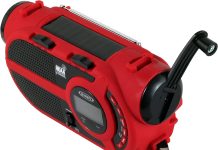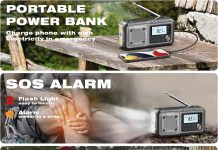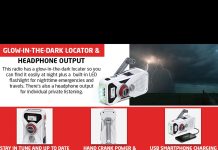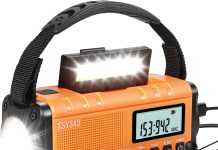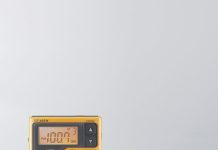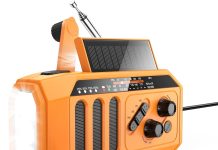In today’s fast-paced world, being prepared for emergency situations is crucial. One important tool to have on hand is an emergency radio, which can provide vital information and updates during power outages or natural disasters. But how do we ensure that our emergency radio is always in working condition when we need it the most? In this article, we will explore the best ways to store an emergency radio to guarantee its functionality, allowing us to stay connected and informed during times of crisis.
Review contents
Choosing the Right Location for Storage
Keep it easily accessible
One of the most important considerations when storing an emergency radio is to keep it easily accessible. During an emergency situation, every second counts, and you don’t want to waste precious time searching for your radio. Choose a storage location that is within reach and easily visible, such as a designated spot on a shelf or in a drawer.
Avoid extreme temperatures
Extreme temperatures can have a detrimental effect on the performance and lifespan of your emergency radio. It is important to avoid storing it in areas that are prone to extreme heat or cold, such as attics or basements. Optimal temperature range for storage is between 32°F (0°C) and 95°F (35°C).
Protect it from moisture and water
Moisture and water can damage the internal components of an emergency radio, rendering it useless when it is most needed. To protect your radio from moisture, avoid storing it in damp areas such as bathrooms or near sinks. Additionally, you can place a moisture-absorbing packet or desiccant near the radio to absorb any excess moisture in the air.
Prevent exposure to direct sunlight
Direct sunlight can cause the exterior of your emergency radio to fade or warp over time. More importantly, it can also lead to overheating of the electronic components, which can severely impact its functionality. To prevent direct sunlight exposure, choose a storage location away from windows or use curtains or blinds to block the sunlight.
Find a place away from electromagnetic interference
Electromagnetic interference can interfere with the reception and performance of your emergency radio. To ensure optimal performance, store your radio away from electronics that produce electromagnetic fields, such as televisions, microwaves, or speakers. This will help to minimize any potential interference and ensure clear communication during an emergency.
Proper Handling and Care
Clean the radio regularly
Regular cleaning is essential to maintain the performance and longevity of your emergency radio. Use a soft, lint-free cloth to wipe the exterior of the radio and remove any dust or dirt buildup. Avoid using harsh chemicals or abrasive materials that could potentially damage the radio.
Avoid dropping or mishandling
Accidental drops or mishandling can lead to internal damage or even breakage of the emergency radio. To prevent this, handle the radio with care, ensuring a secure grip. Keep it away from the edges of surfaces and avoid any rough handling that could potentially damage the internal components.
Check battery levels periodically
To ensure that your emergency radio is always ready for use, it is important to periodically check the battery levels. Low battery levels can compromise the functionality of the radio, so make it a habit to check and replace the batteries if necessary. This will ensure that your radio is always powered up and ready to go during an emergency.
Inspect and replace worn out parts
Over time, certain parts of your emergency radio may wear out due to regular use or wear and tear. It is important to inspect these parts, such as buttons, knobs, or connectors, and replace any that are worn out or malfunctioning. This will help to maintain the functionality of the radio and ensure that it operates optimally when needed.
Store it in a protective case
A protective case can provide an extra layer of defense against accidental damage or impact. Find a suitable case that fits your emergency radio, ensuring that it has sufficient padding and protection to prevent any damage during storage or transportation. A protective case will help to extend the lifespan of your radio and keep it in good condition.
Battery Maintenance
Use high-quality batteries
The quality of batteries used in your emergency radio can directly impact its performance and lifespan. Invest in high-quality batteries that are known for their reliability and long-lasting power. Avoid using cheap or generic batteries, as they may not provide consistent power and could lead to poor performance or even damage to the radio.
Keep spare batteries on hand
Having spare batteries on hand is crucial during emergency situations. It is recommended to keep a supply of spare batteries readily available, so that you can quickly replace depleted ones and ensure your radio remains operational. Regularly check the expiration dates on your spare batteries and rotate them to ensure maximum efficiency.
Store batteries separately
When not in use, it is important to store batteries separately from your emergency radio. Storing batteries directly in the radio for extended periods can lead to corrosion and damage. Keep them in a dry and cool location, preferably in a battery organizer or container designed to prevent contact between battery terminals.
Avoid leaving batteries inside for long periods
Leaving batteries inside your emergency radio for long periods of inactivity can lead to corrosion or leakage, damaging the internal components. When not in use, remove the batteries from the radio and store them separately. This will help to prolong the lifespan of both the batteries and the radio.
Test and rotate batteries regularly
To ensure the reliability and efficiency of your emergency radio, it is essential to regularly test and rotate the batteries. This means periodically checking the charge level of the batteries, performing a radio test to ensure proper functionality, and replacing any depleted batteries with fresh ones. By doing so, you can rest assured that your radio will always be ready for use.
Antenna and Reception Considerations
Extend and retract the antenna carefully
The antenna plays a vital role in the reception capabilities of your emergency radio. When extending or retracting the antenna, do so with care to avoid any excessive force or bending that could damage the antenna mechanism. Take your time and extend the antenna fully for optimal reception, and retract it carefully when not in use.
Avoid bending or damaging the antenna
Bending or damaging the antenna can severely impact the reception quality of your emergency radio. The antenna should always be kept straight and intact to ensure optimal signal strength. Avoid putting any unnecessary pressure on the antenna or subjecting it to any physical force that could lead to bending or breakage.
Find an optimal location for reception
To maximize the reception capabilities of your emergency radio, it is important to find an optimal location that allows for clear signal reception. Experiment with different areas of your home or outdoor spaces to determine the best spot for reception. Higher and unobstructed locations, such as near windows or on balconies, often provide better reception.
Try different positions for better signal
Sometimes, simply changing the position of your emergency radio can improve the signal and reception. Try rotating or placing the radio in different positions to see if this affects the reception quality. This can be especially helpful in areas with weak signal strength or during severe weather conditions.
Utilize external antennas or boosters if necessary
In situations where the built-in antenna of your emergency radio is not providing sufficient reception, consider using external antennas or signal boosters. These devices can significantly enhance the signal strength and improve reception capabilities. Consult with an expert or refer to the manufacturer’s recommendations on compatible external antennas or boosters.
Regular Testing and Inspection
Test the radio periodically
Regularly testing your emergency radio is crucial to ensure its functionality and reliability. Set a schedule to test your radio at least once a month, tuning into different channels and checking for clear reception. This will help you identify any issues or malfunctions in advance and allow you to take the necessary steps for repair or replacement.
Check for any physical damages
Inspect the exterior of your emergency radio for any signs of physical damage, such as cracks, dents, or loose parts. Physical damages can affect the overall performance and durability of the radio. Address any issues immediately to prevent further damage or potential malfunction during an emergency.
Inspect the connectors and ports
Regularly inspect the connectors and ports of your emergency radio for any signs of corrosion, dirt, or damage. Corroded or dirty connectors can hinder proper connection and result in poor performance. Clean or replace any damaged connectors or ports to ensure optimal functionality.
Ensure buttons and knobs function properly
Check that all buttons and knobs on your emergency radio are in good working condition. Press each button and turn every knob to ensure they respond appropriately. If any buttons or knobs are stiff, unresponsive, or malfunctioning, it may be necessary to have them repaired or replaced.
Listen for any audio issues
During your regular testing, listen carefully for any audio issues, such as static, distortion, or low volume. Audio problems can indicate internal issues or a deteriorating speaker, and may require professional attention or replacement. It is important to address any audio issues promptly to maintain clear communication during emergency situations.
Protection against Dust and Debris
Keep the radio covered when not in use
To protect your emergency radio from dust and debris, it is advisable to keep it covered when not in use. Dust covers or soft cases designed specifically for your radio model can help prevent the accumulation of dust, dirt, or other particles that may interfere with its performance or functionality.
Store it in a clean and dust-free environment
When storing your emergency radio, choose a clean and dust-free environment. Avoid areas of your home or storage spaces that are prone to dust accumulation, such as garages or attics. A clean environment will minimize the risk of dust and debris entering the radio and affecting its internal components.
Use a soft brush or compressed air to remove dust
Periodically remove dust and debris from your emergency radio using a soft brush or compressed air. Gently brush or blow away any dust or particles that may have settled on the exterior or in between buttons and knobs. This will help to maintain the cleanliness of the radio and prevent the buildup of dirt that could affect its performance.
Avoid using harsh chemicals for cleaning
When cleaning your emergency radio, avoid using harsh chemicals or solvents that could potentially damage the exterior or internal components. Stick to using a soft, lint-free cloth dampened with water or a mild cleaning solution specifically designed for electronics. Be sure to follow the manufacturer’s instructions for proper cleaning.
Inspect and clean the speaker and microphone
The speaker and microphone of your emergency radio can accumulate dust, debris, or even moisture over time. Regularly inspect these components and gently clean them with a soft brush or cloth to ensure clear and unobstructed sound transmission. Taking care of these components will enhance the overall audio quality and performance of your radio.
Safe Storage during Disuse
Securely pack and store all accessories
When your emergency radio is not in use, it is essential to securely pack and store all its accessories. This includes any charging cables, adapters, external antennas, or user manuals. Keeping all the accessories together in a designated bag or box will make it easier to locate and utilize them when needed.
Disconnect and remove the batteries
To prevent potential damage from battery leakage or corrosion, it is important to disconnect and remove the batteries when storing your emergency radio for an extended period. This will help preserve the life of the batteries and prevent any damage that could occur if they were to remain connected for long periods of inactivity.
Wrap cables and cords properly
To prevent tangling or damage, make sure to wrap any cables or cords attached to your emergency radio properly. Avoid tightly coiling or twisting the cables, as this can lead to kinks or fraying. Use cable ties or Velcro straps to secure the cables neatly, ensuring that they are not subjected to unnecessary strain or pressure.
Use desiccant packs or moisture absorbers
Moisture can be a common enemy when it comes to storing electronic devices. To protect your emergency radio from potential moisture damage, consider using desiccant packs or moisture absorbers in the storage container. These packs will help absorb any excess moisture in the air and create a dry environment for safe storage.
Keep it away from children and pets
During the disuse period, it is important to keep your emergency radio stored away from the reach of children and pets. Children may be tempted to play with the radio, potentially causing damage, while pets may chew on cables or accessories. Find a secure and high location or lockable storage container to ensure the safety of both your radio and your loved ones.
Considerations for Long-Term Storage
Remove batteries before long-term storage
When storing your emergency radio for an extended period, it is highly recommended to remove the batteries. This is to prevent any potential leakage or corrosion that could damage the internal components of the radio. Storing the batteries separately will also help preserve their longevity.
Choose an airtight container for protection
To provide maximum protection during long-term storage, choose an airtight container for your emergency radio. This will help prevent dust, moisture, or any other elements from entering the container and potentially causing damage to the radio. Additionally, using a container with foam inserts or padding can further safeguard the radio from impact or vibrations.
Store in a cool and dry location
When storing your emergency radio for the long term, select a cool and dry location. Optimal storage conditions are within an ambient temperature range of 32°F (0°C) to 95°F (35°C). Avoid areas with high humidity or extreme temperature fluctuations, as they can contribute to deterioration and damage of the radio’s internal components.
Perform regular maintenance during storage
Even during long-term storage, it is important to perform regular maintenance on your emergency radio. Inspect the exterior and connectors periodically, clean any dust or debris, and ensure that all the protective measures are in place. This will help to keep the radio in good condition and prevent any surprises when you need it in an emergency.
Label and date the storage container
To facilitate easy identification and organization, label the storage container for your emergency radio. Include information such as the contents, date of storage, and any other relevant details. This will help you keep track of the radio’s storage history and ensure that you can quickly locate it when needed.
Emergency Radio Upgrade and Replacement
Stay updated with advancing technologies
Emergency radio technologies are constantly evolving and improving. To ensure that you have the most effective equipment, stay updated with advancements in emergency radio technology. Research and familiarize yourself with newer models that offer enhanced features, improved reception, and longer battery life.
Consider upgrading to a modern model
If you have been using the same emergency radio for a long time, it may be worth considering an upgrade to a modern model. Newer emergency radios often come with improved durability, increased water or dust resistance, and enhanced functionalities. Evaluate your needs and budget, and explore options that will best serve your emergency communication requirements.
Follow manufacturer’s instructions for replacement
If your emergency radio is no longer functioning properly or has become outdated, it may be time for a replacement. Before purchasing a new radio, carefully read and follow the manufacturer’s instructions for replacement. This will ensure that you choose the right model and understand any specific requirements or compatibility factors.
Donate or recycle old and unused radios
Rather than letting your old or unused emergency radios collect dust in storage, consider donating them to organizations or individuals who may benefit from them. Many community centers, schools, or disaster relief organizations accept donated radios to distribute to those in need. Alternatively, explore recycling options in your area to properly dispose of outdated or non-functional radios.
Keep informed about replacement parts availability
If you prefer to repair and maintain your emergency radio rather than replace it entirely, stay informed about the availability of replacement parts. Some manufacturers or third-party vendors may offer replacement components for specific radio models. This can be a cost-effective way to extend the lifespan of your radio and keep it in good working condition.
Emergency Radio Maintenance Checklist
Designate a specific maintenance routine
To ensure that your emergency radio is properly maintained, designate a specific maintenance routine. Set a schedule for regular cleaning, testing, and inspection of the radio, and stick to it. This will help you stay on top of maintenance tasks, identify any issues in a timely manner, and ensure that your radio is always prepared for emergencies.
Clean and inspect the radio exterior
Regularly clean and inspect the exterior of your emergency radio. Use a soft, lint-free cloth to remove dust, dirt, or fingerprints from the surfaces. Inspect for any physical damages, such as cracks or loose parts, and address them promptly to prevent further damage.
Inspect the battery compartment and contacts
Pay special attention to the battery compartment and battery contacts during your maintenance routine. Ensure that the compartment is clean and free of any debris, and check for signs of corrosion on the battery contacts. Clean or replace any corroded contacts to maintain a reliable connection and prevent potential damage to the radio.
Check antenna connection and condition
Inspect the antenna connection and condition to ensure that it is secure and in good working order. If the antenna is detachable, make sure it is properly connected without any looseness or instability. Check for any signs of damage, such as fraying or bending, and address any issues immediately to ensure proper reception.
Test radio reception and audio quality
During your maintenance routine, it is crucial to test the radio reception and audio quality. Tune into different channels and listen for clear signals without any static or distortion. Pay attention to the volume level and overall audio quality. If any issues are detected, troubleshoot or seek professional assistance to resolve them.


